Quantathon Competitors Harness Math Passion
By Kirsten Heuring
Media Inquiries- Interim Director of Communications, MCS
- 412-268-9982
On Saturday, Feb. 24, undergraduate students from across Carnegie Mellon University participated in Quantathon, an annual math competition hosted by the Quant Club and sponsored by Goldman Sachs.
Students were tasked with solving a series quantitative finance problems based on a hypothetical casino game, where a coin flip would determine whether a player would win or lose. They were asked how they could maximize winnings and what the probability of winning would be over a certain number of coin flips.
Tze Hng Loke, a junior in computer science and the president of the Quant Club, said that his past participation in Quantathon as a first-year student inspired his interest in quantitative finance.
"The problems are really interesting, and even though the problem-solving process might not have an inherent relation to finance at first glance, there are a lot of situations where you can generalize the problem to finance applications," Loke said. "It's a great way for students interested in quantitative finance to learn more about what the industry entails and what the mathematical aspects behind quantitative finance actually are."

Computer science first-year Bryan Zhang, mathematical sciences and computer science first-year Yunqui Liu and business administration sophomore Cory Yu used computational methods to solve the problem. They were part of Team Let's Earn Money along with mathematical sciences first-year Yidai Cen, who is not pictured.
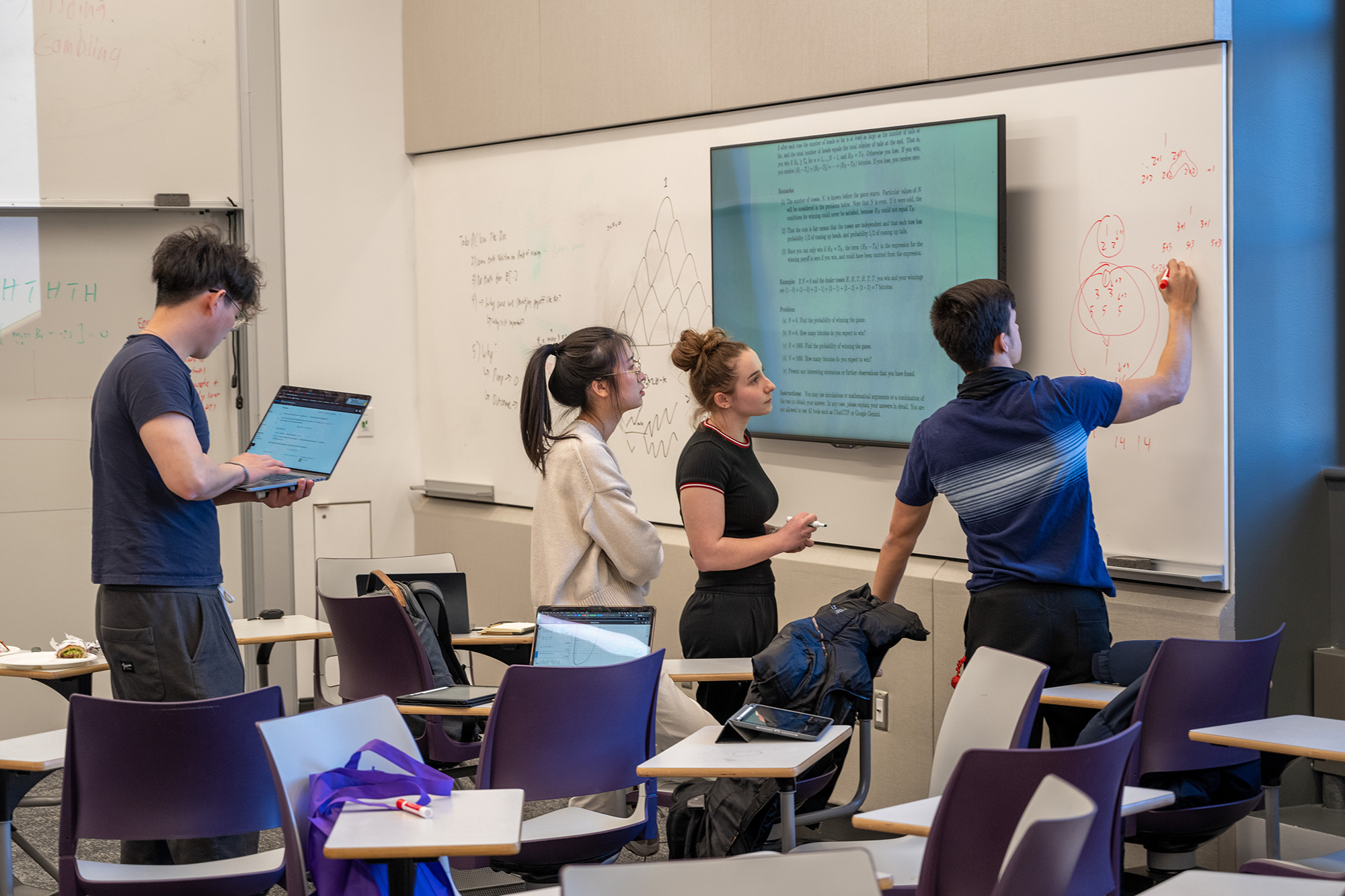
Students spent much of the day solving problems. Team Probably Correct, consisting of business administration and computer science senior Winston Zha, mathematical sciences sophomore Sia Paramavej, business administration junior Alyssa Robert and computer science and mathematical sciences sophomore Juan Ageitos, used a whiteboard to diagram their work.
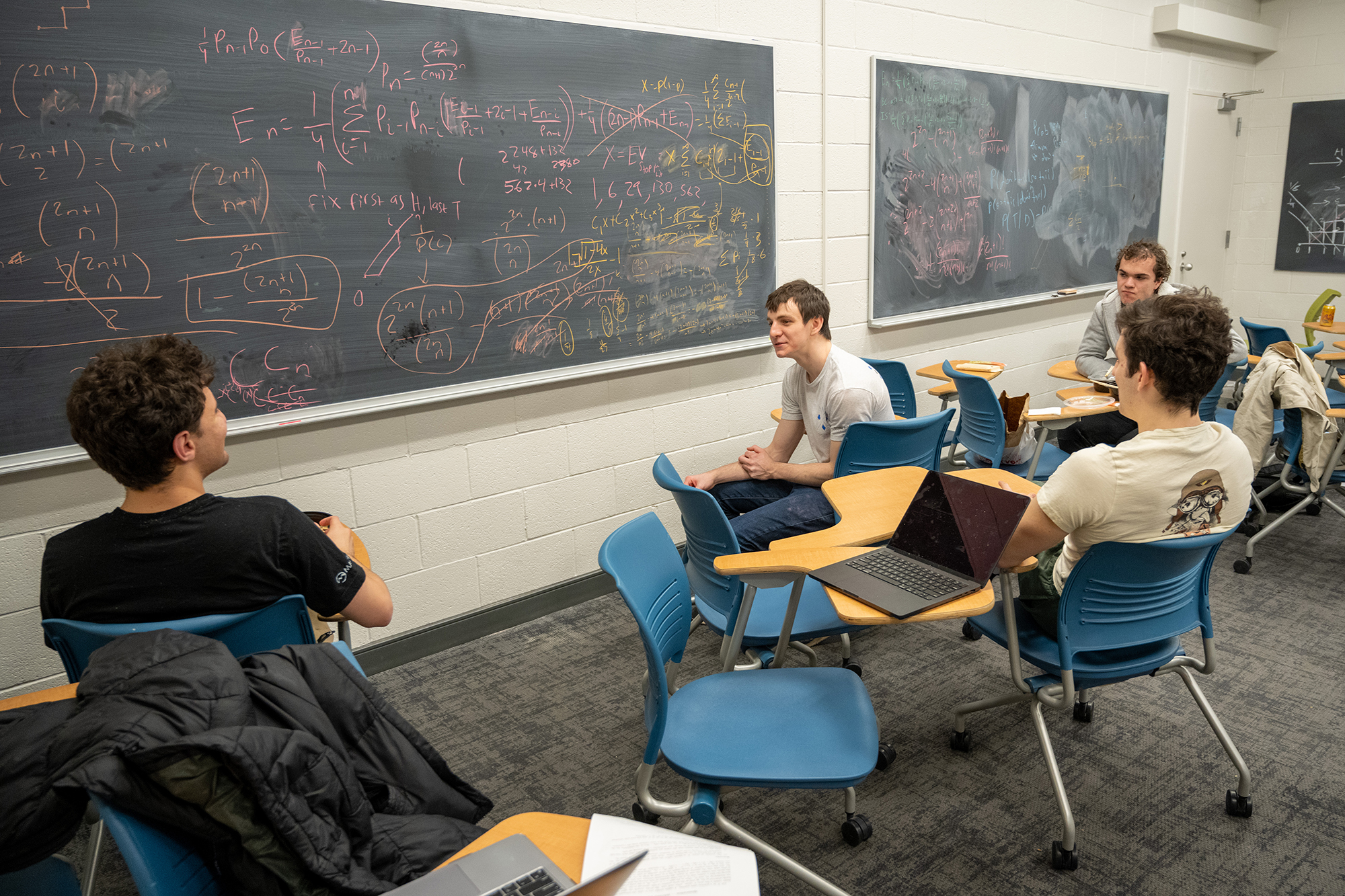
Mathematical sciences and computer science junior Harrison Wiseblatt, mathematical sciences and interdisciplinary computer science junior Mario Tutuncu-Macias, computer science junior Gil Shteyman and mathematical sciences and computer science junior Max Grebinskiy discuss the problem and its potential solutions.
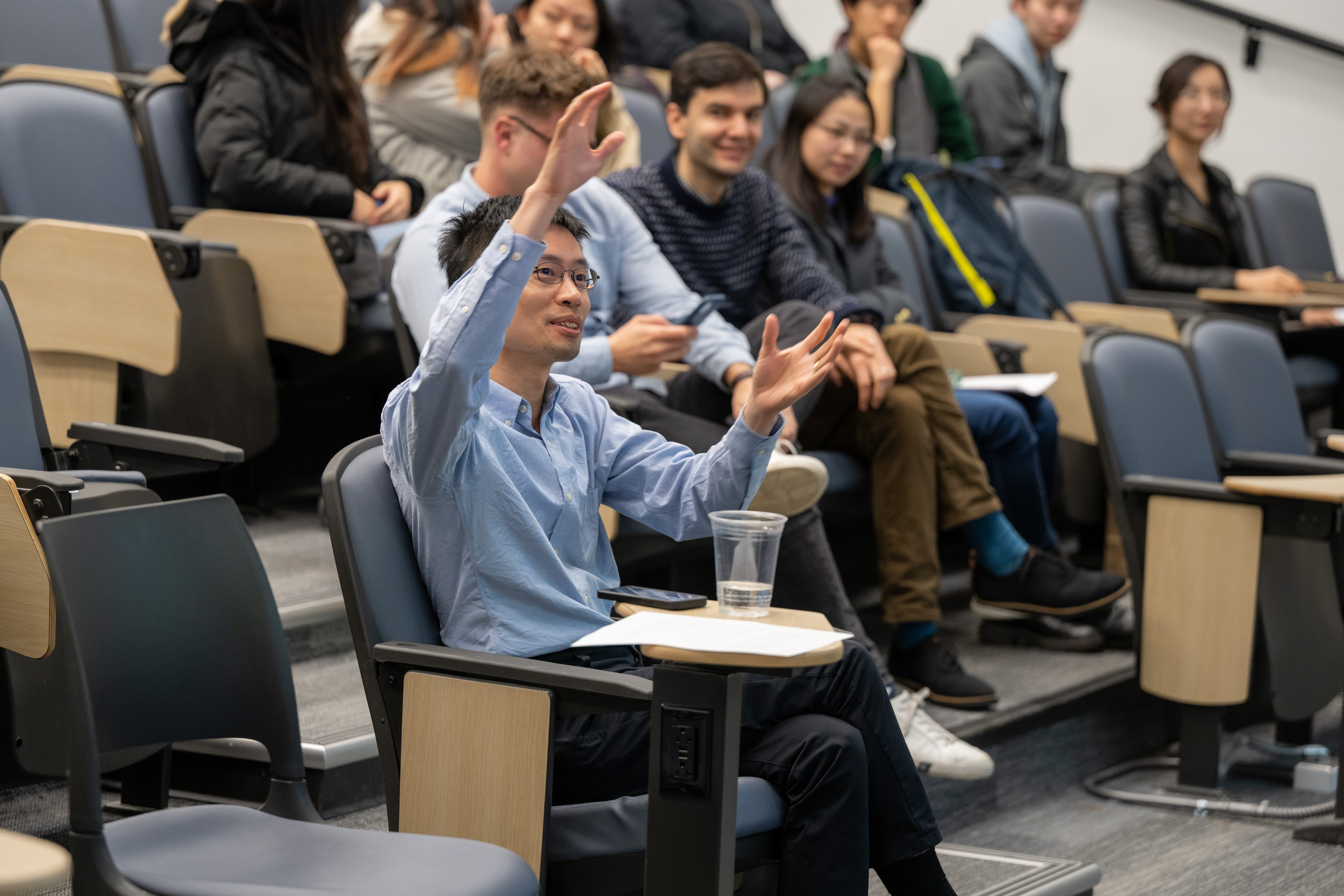
Students' work was judged by Department of Mathematical Sciences professors including Po-Shen Loh, Johannes Wiesel and Mykhaylo Shkolnikov.
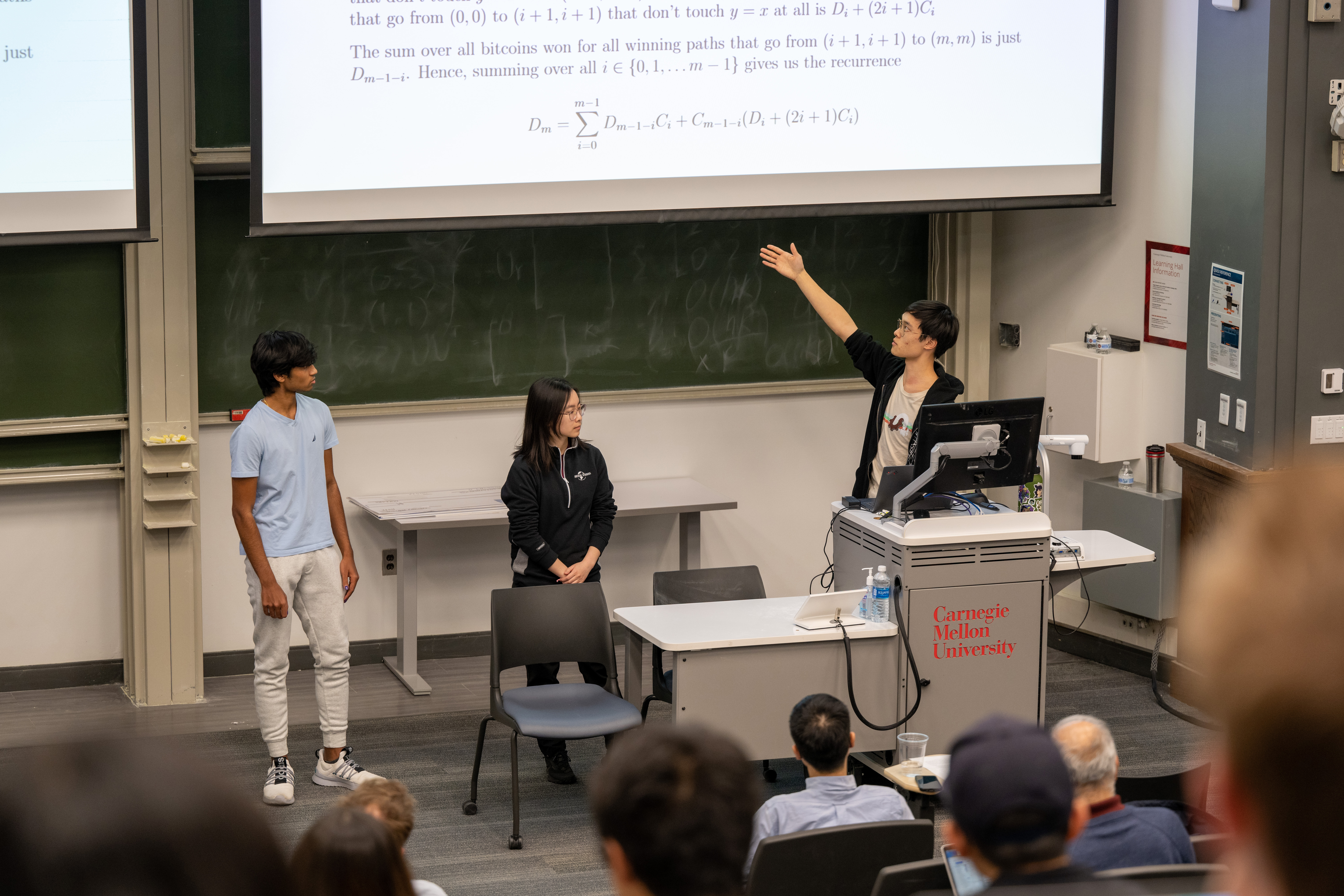
Three teams were chosen to present their work. Team Meow Meow, including mathematical sciences sophomore David Lu, electrical & computer engineering sophomore Serena Shih and mathematical sciences and computer science junior Brandon Dong, was one of the teams chosen. They tied for second place.
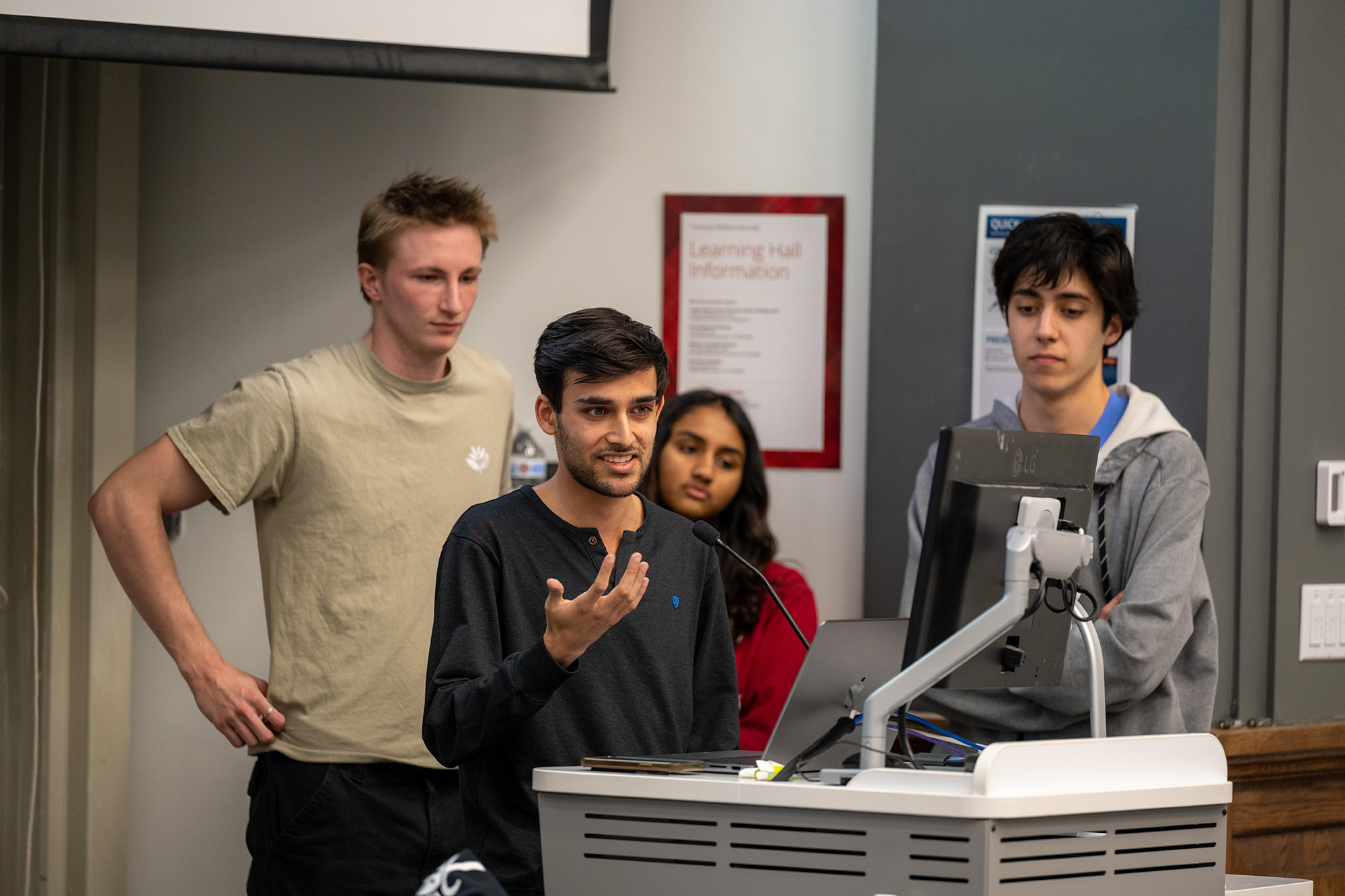
Mathematical sciences and computer science senior Advait Nene presents Team Vacuum's work accompanied by mathematical sciences sophomore Michael Perry, business administration and history sophomore Varsha Gaddam and computer science sophomore Cem Adatepe. Team Vacuum tied for second place.
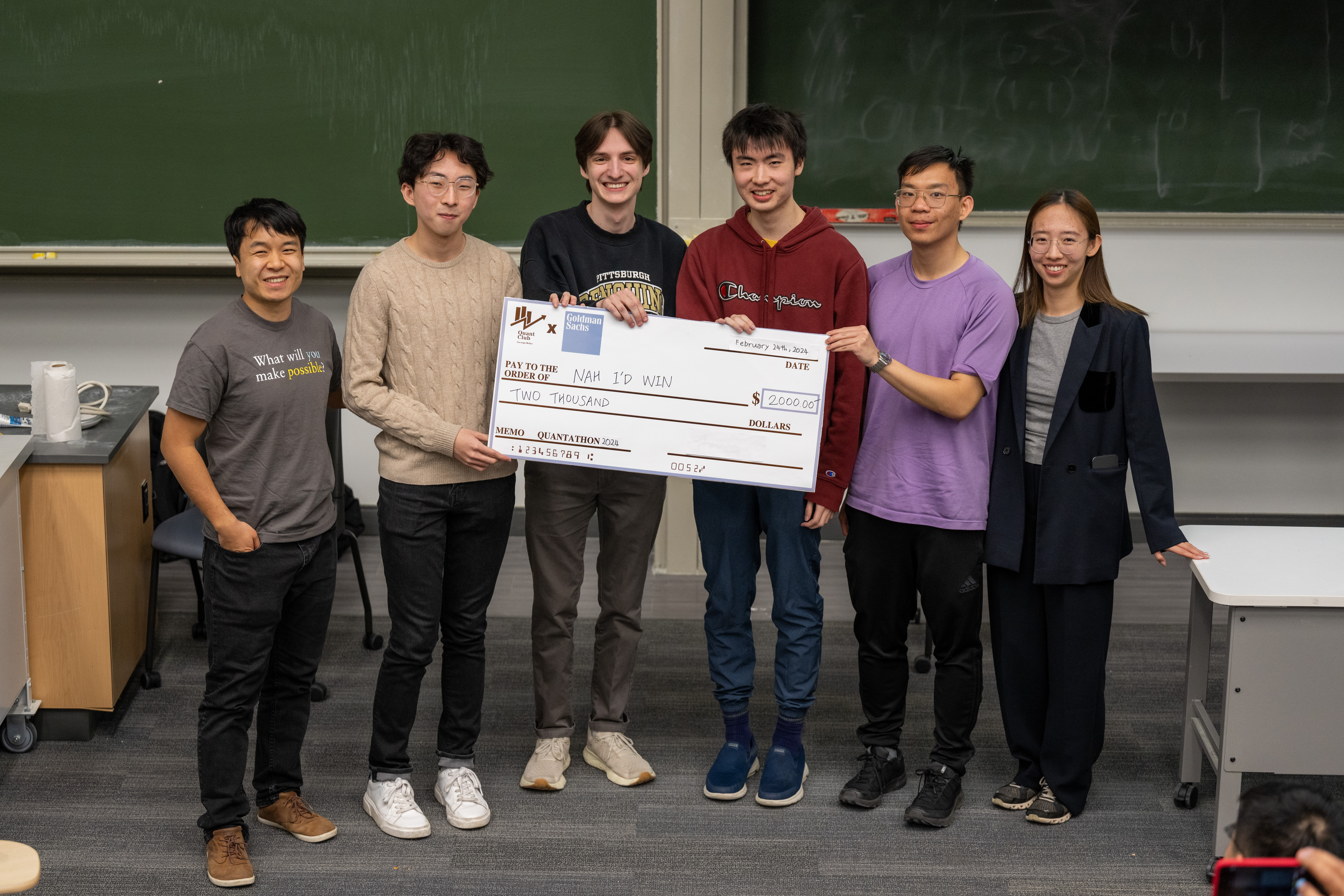
Team Nah I'd Win, consisting of mathematical sciences sophomore Lucas Zhang, mathematical sciences sophomore Michael Duncan, computer science sophomore James Yang and mathematical sciences and interdisciplinary computer science senior David Tang, won first place. They were presented with an award by representatives from Goldman Sachs.